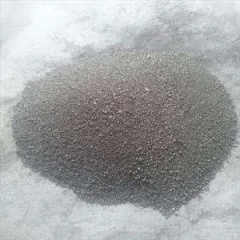Molybdenum Carbide: A Leader in High-Performance Catalytic Materials and Future Power Applications
Molybdenum carbide (Mo â C), as a novel change steel carbide, exhibits remarkable physical and chemical properties, making it a superior stimulant in numerous reactions, particularly in hydrogen production and co2 reduction, with wide application potential customers. Mo â C is made up of molybdenum (Mo) and carbon (C), featuring a high melting factor (~ 2690 ° C), exceptional electrical conductivity, thermal security, and mechanical stamina. Most importantly, its surface area is rich in active websites that can efficiently adsorb and trigger molecules, making it a suitable catalytic material. Premium Mo â C can be prepared utilizing methods such as direct carburization, chemical vapor deposition (CVD), sol-gel procedure, and microwave-assisted synthesis. These advanced methods give a solid foundation for exploring Mo â C’s potential in lots of applications.
(Molybdenum Carbide Powder)
Recently, study has shown that Mo â C excels in numerous areas, including efficient hydrogen evolution reaction (HER) drivers, outstanding carbon monoxide â decrease catalysts, premium hydrodesulfurization (HDS) efficiency, and outstanding lithium-ion battery anode materials. For instance, in acidic atmospheres, Mo â C can achieve quick and stable water splitting to create hydrogen with low overpotential and Tafel incline near academic values. In transforming carbon monoxide â into useful chemicals like formic acid or methanol, Mo â C shows high selectivity and conversion efficiency. During oil refining, Mo â C can complete HDS reactions at lower temperatures with greater selectivity and activity. As a lithium-ion battery anode, it offers higher ability and cycle life. These research searchings for have significantly moved the commercial application of Mo â C from laboratory settings.
Mo â C showcases considerable applications throughout various sectors. In hydrogen manufacturing and storage space, the Dalian Institute of Chemical Physics, Chinese Academy of Sciences, established an effective electrolyzer based upon Mo â C nanosheet varieties, attaining stable water splitting at area temperature, lowering power consumption, and improving hydrogen purity. For clean energy conversion, Stanford University produced a photoelectrochemical gadget made up of Mo â C nanowires that can straight convert carbon monoxide â right into fluid gas under light problems, reducing greenhouse gas exhausts while offering clean fuel resources. In environmental protection, limit Planck Institute for Strong State Study discovered that Mo â C-modified activated carbon fibers dramatically enhance SO â capture efficiency and are quickly regrowed for duplicated usage. Additionally, in brand-new energy storage space gadgets, scientists at KAIST reported a sodium-ion battery utilizing Mo â C as the anode product, identified by quick charge-discharge prices, superb cycle stability, and power thickness surpassing 400 Wh/kg, guaranteeing for future smart grids and electrical lorries.
()
In spite of considerable accomplishments in Mo â C materials and related technologies, challenges stay in practical promotion and application, such as cost problems, massive production modern technology, ecological kindness, and standardization. To get rid of these obstacles, continual development and enhanced teamwork are crucial. On one hand, deepening basic study to explore new synthesis approaches and enhance existing processes can continually decrease manufacturing prices. On the various other hand, establishing and developing sector requirements advertises worked with growth amongst upstream and downstream firms, constructing a healthy and balanced ecological community. Colleges and research study institutes should boost academic financial investments to cultivate more high-quality specialized talents. In recap, Mo â C, as an extremely appealing high-performance catalytic material, is progressively transforming different elements of our lives. With recurring technological maturation and perfection, Mo â C is anticipated to play an irreplaceable duty in a growing number of areas, bringing more convenience and advantages to human culture in the coming years.
TRUNNANO is a supplier of Molybdenum Carbide with over 12 years of experience in nano-building energy conservation and nanotechnology development. It accepts payment via Credit Card, T/T, West Union and Paypal. Trunnano will ship the goods to customers overseas through FedEx, DHL, by air, or by sea. If you want to know more about Molybdenum Carbide, please feel free to contact us and send an inquiry(sales8@nanotrun.com).
All articles and pictures are from the Internet. If there are any copyright issues, please contact us in time to delete.
Inquiry us

